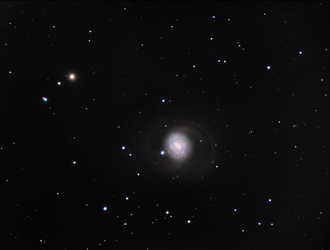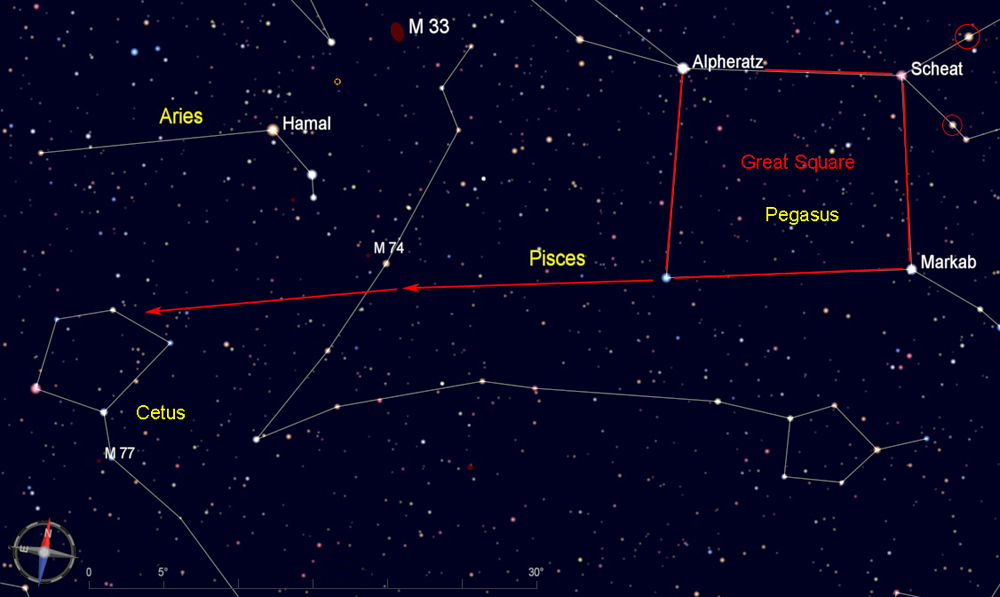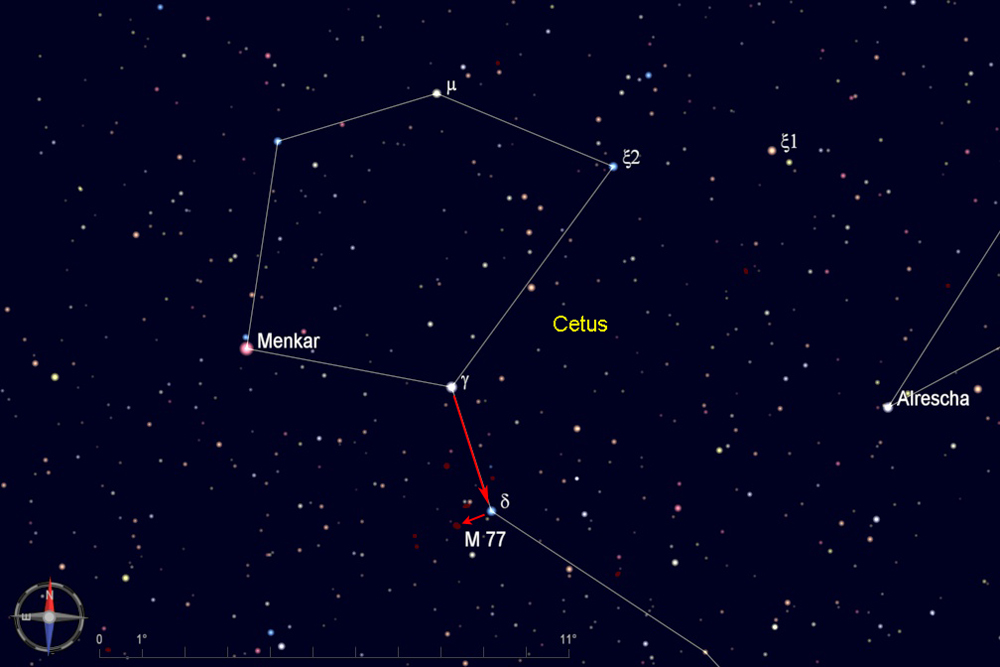
Start by finding the Great Square of Pegasus, which rises in the eastern sky during the early fall evenings, is high overhead later in the fall, and sinks in the western sky during early winter. To be sure you know how the square is oriented in the sky, look for the two stars outside the northwest corner of the square (circled in the chart below) that form a small triangle with Scheat.
Using the southern edge of the Great Square as a pointer, extend a line to the east about twice the size of the Square, and you will arrive at a circle of dim stars that represent the head of Cetus, the whale.

From the head of Cetus, move south about 3 degrees to the 4th magnitude star delta (δ) Ceti. With δ centered in a low-power eyepiece, move 3/4 degree to the east to reach M77. It is bright enough to be seen well in even a small telescope.
